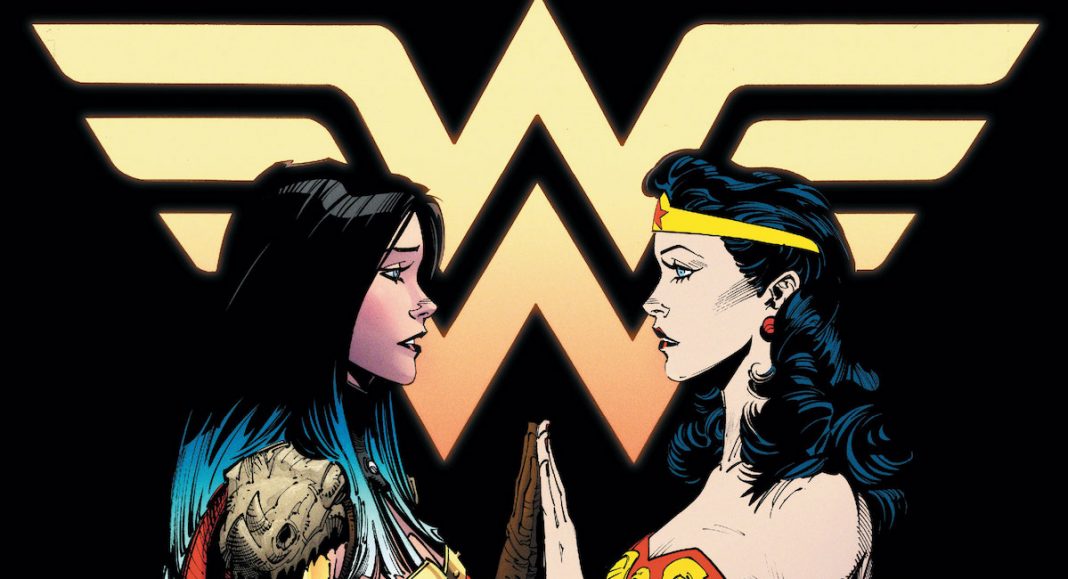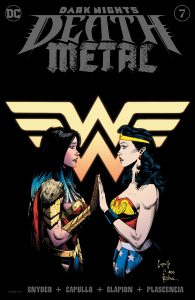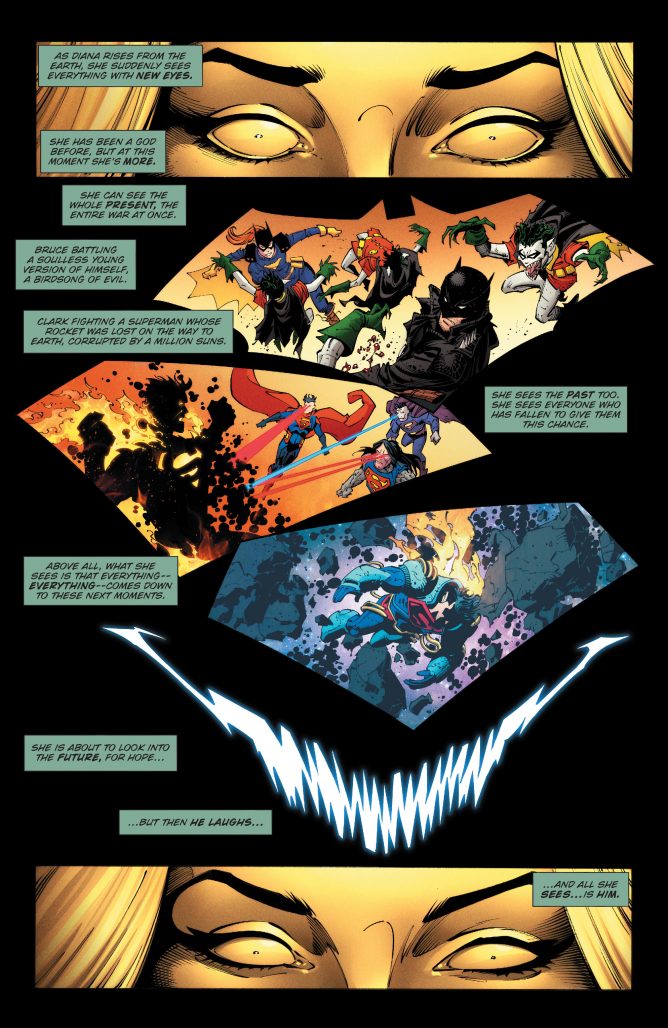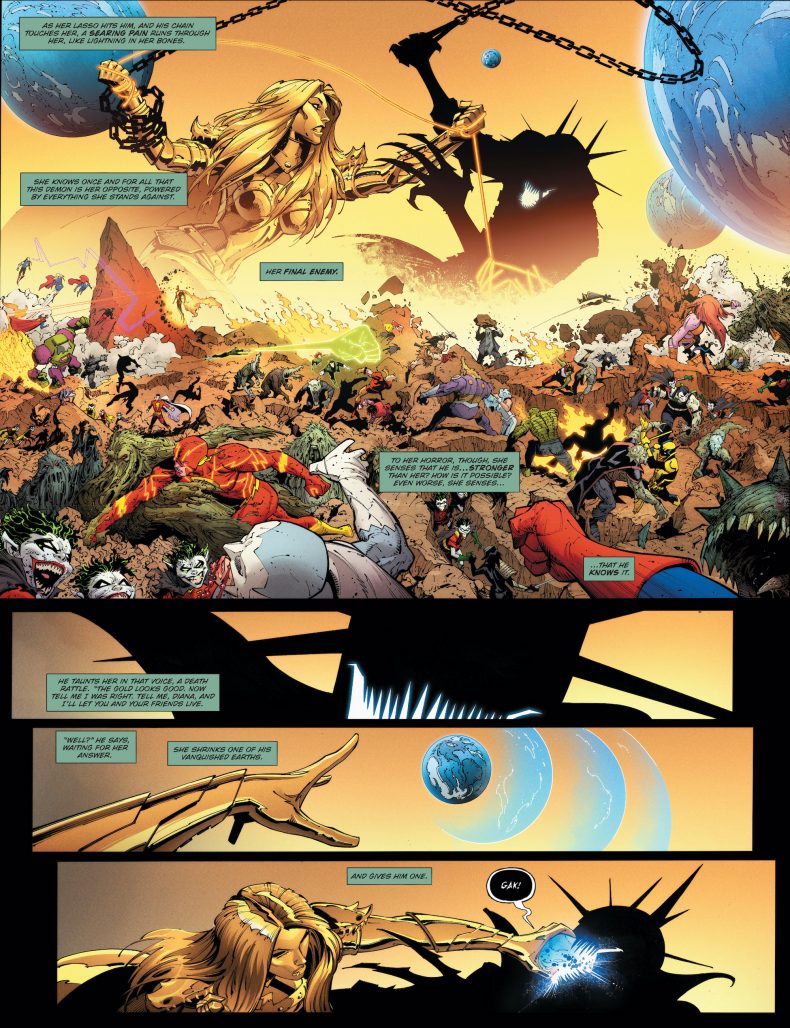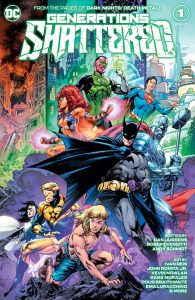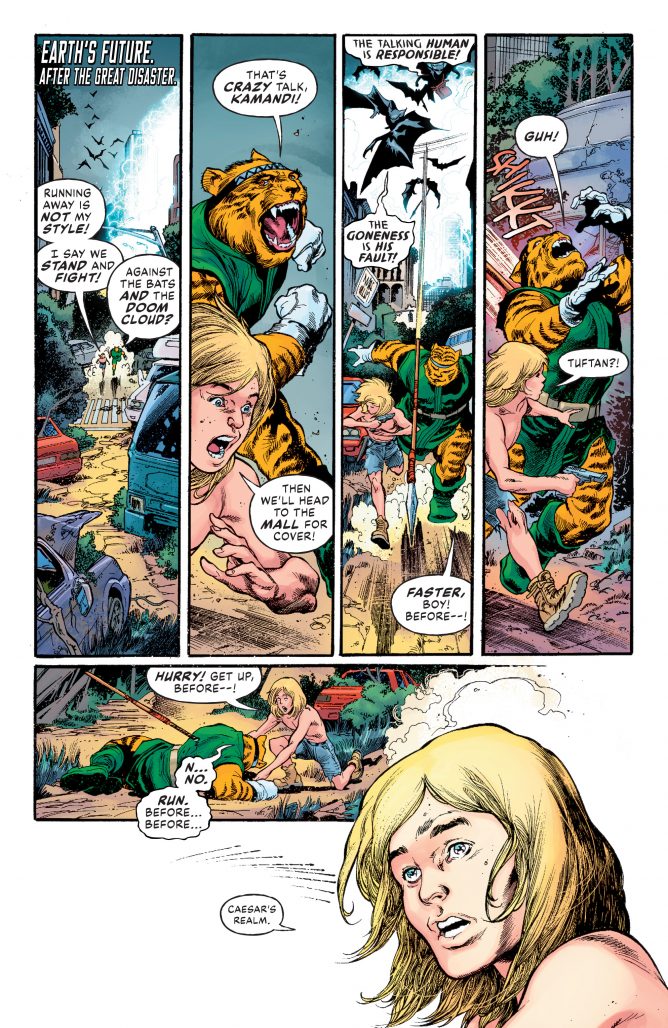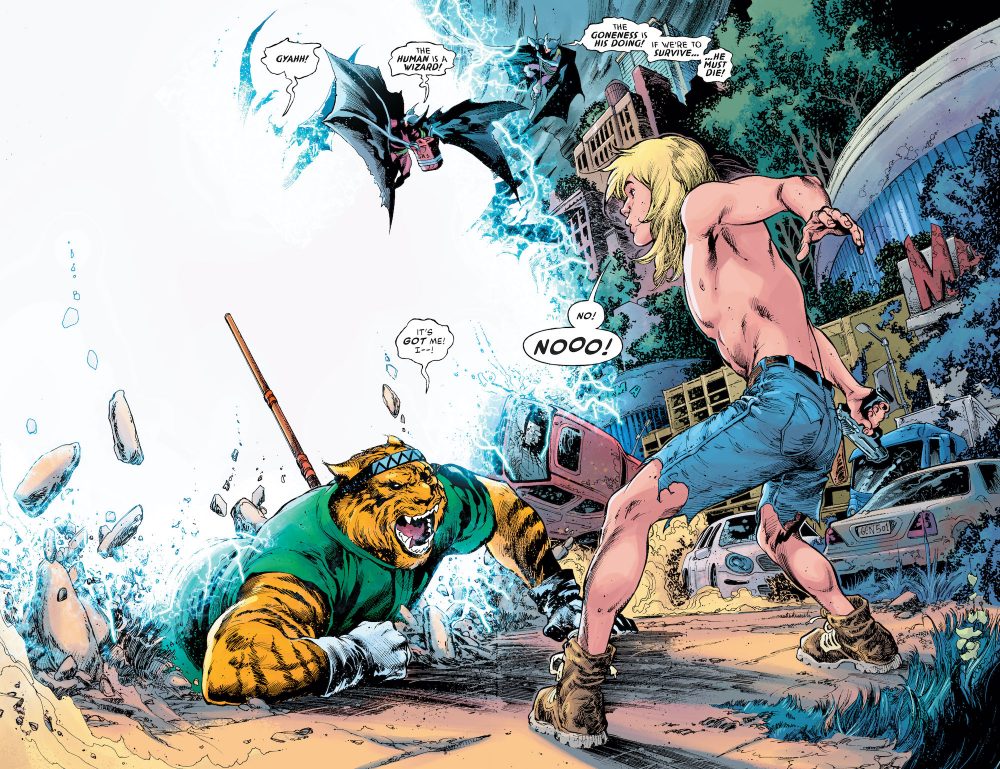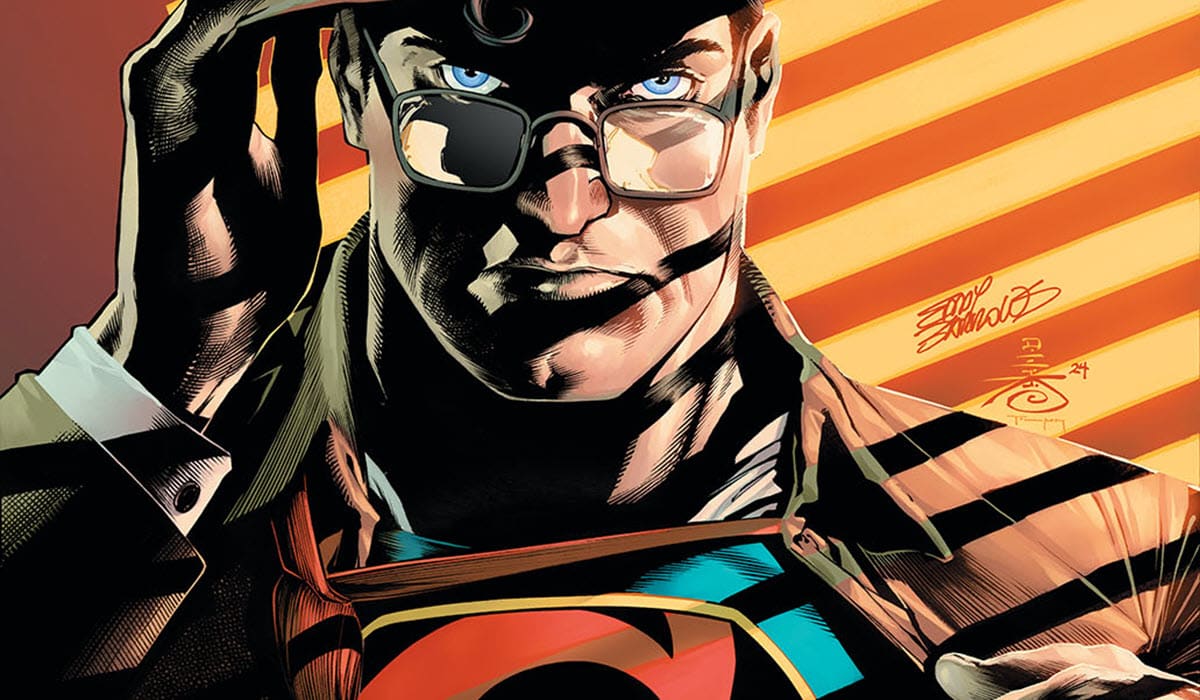THIS WEEK: DC kicks off a new year with the conclusion to 2020’s big event, Dark Nights: Death Metal, and the beginning of a two-part time-altering tale with the Generations: Shattered one-shot! How do these two titanic titles shape the future of DC’s Infinite Frontier?
NOTE: This review contains spoilers for Dark Nights: Death Metal #7 and Generations: Shattered #1. For coverage of the first week of DC’s Future State titles, be sure to check out this week’s Bonus Round-Up for a roundtable discussion of all six titles!
Dark Nights: Death Metal #7
Writer: Scott Snyder
Penciller: Greg Capullo, Yanick Paquette, and Bryan Hitch
Inker: Jonathan Glapion, Yanick Paquette, and Bryan Hitch
Colorist: FCO Plascencia, Nathan Fairbairn, and Alex Sinclair
Letterer: Tom Napolitano
Cover Artists: Greg Capullo, Jonathan Glapion, & FCO Plascencia
Dark Nights: Death Metal, Scott Snyder, Greg Capullo, Jonathan Glapion, and FCO Plascencia’s sequel to the hit 2016 Dark Nights: Metal event, has had its ups and downs. After early issues of the series spent a lot of time setting up The Batman Who Laughs’s remade Earth, things took off towards the end of the third issue and, for better or worse, never looked back. Twist after twist came fast and furious, and this week’s final issue of the event had a lot of resolution to do to bring things to a satisfying conclusion.
A majority of the final issue is a cosmic-scale battle between a powered-up Wonder Woman and The One Who Laughs, with the remaining heroes on Earth facing off with still more evil versions of themselves and their friends. In a way, the ending of Death Metal #7 was entirely inevitable. The Batman Who Laughs literally reshaped the continents of Earth. Dozens of heroes had died, including Batman, who’s only been around throughout the series thanks to a Black Lantern ring. There was virtually no way this series was ending without some big reset button being hit. The big question has been in what form that would come. With Wonder Woman at the center of the series, it seemed likely she might end up being the one to recreate the world herself, and to a certain extent that’s how things play out. The evil is defeated, the world is righted, and a new chapter begins. In that way, Death Metal #7 is very satisfying, but it’s also not necessarily ground-breaking in its approach.
Then again, that doesn’t seem to have been the goal of Death Metal, which from the beginning has elevated spectacle above just about all else. There’ve been small character moments here and there, but since the aforementioned end of the third issue the series has been More, More, More right through to the end. This isn’t a bad thing, and it’s something at which Snyder, Capullo, and co. are generally fairly adept. Unfortunately the sheer volume of More that this series throws at readers makes it a little hard to follow, especially when reading it from month-to-month. For example, Lex Luthor’s late addition in Death Metal #5 of the idea that the only way to beat The Batman Who Laughs is by ‘unknotting history’ to reveal ‘the truth’ sounds like total nonsense, but only because no clear line is ever drawn between doing that and the ‘Connective Energy’ discussed five months prior in the first issue (it also didn’t help that midway through the series they started referring to ‘Connective Energy’ as ‘Anti-Crisis Energy’). Things will probably hang together well when read all at once, but as a monthly reading experience it was somewhat challenging.
Still, as a blockbuster event series, Death Metal succeeded on nearly every level. At this point Snyder and Capullo have what they do together down to a science, and while, as mentioned before, it’s not necessarily ground-breaking, it’s certainly full of bombast and out-there ideas. Reading one of their books feels like being a kid playing with action figures, smashing them together and just having a blast. It’s pure turn-off-your-brain-and-enjoy-the-’splosions entertainment, the sort of thing that was often a welcome distraction during this past year.
An epilogue of sorts drawn by Yanick Paquette and Nathan Fairbairn serves to set up the forthcoming Infinite Frontier initiative, and holds a few previously-unrevealed surprises about DC’s new status quo. The art on these pages is great, a bright and clean shift away from the relative darkness of the seven issues that preceded it, and a nice visual representation of what’s to come for the DCU. There’s a lot of exposition in those pages that doesn’t always feel natural, and the reason for it (aside from to inform the reader) is somewhat unclear, but otherwise the epilogue works well. The final two pages are drawn by Bryan Hitch and Alex Sinclair, and raise even more interesting questions about DC’s Infinite Frontier.
Overall Dark Nights: Death Metal #7 does a solid job tying up most of the threads of the event, and provides a strong springboard for the future of the DC Universe. It’s unclear at this point what Snyder, Capullo, and co. have planned next within the DCU, and given the scope of this project it wouldn’t be a surprise if they took a break for a while. If Death Metal was their last hurrah as a team with the DCU, though, it was a pretty entertaining note on which to go out.
Final Verdict: Buy.
Generations: Shattered #1
Writers: Dan Jurgens, Andy Schmidt, and Robert Venditti
Pencillers: Ivan Reis, Fernando Pasarin, Aaron Lopresti, Emanuela Luppachino, Bernard Chang, Yanick Paquette, Kevin Nowlan, Dan Jurgens, Paul Pelletier, John Romita Jr., Doug Braithwaite, Rags Morales, and Mike Perkins
Inkers: Joe Prado, Scott Hanna, Oclair Albert, Matt Ryan, Wade Von Grawbadger, Bernard Chang, Yanick Paquette, Kevin Nowlan, Klaus Janson, Sandra Hope, Danny Miki, Doug Braithwaite, Rags Morales, and Mike Perkins
Colorist: Hi-Fi
Letterer: Tom Napolitano
Cover Artists: Ivan Reis, Joe Prado, & Hi-Fi
The other mainline, non-Future State title from DC this week is Generations: Shattered, part one of a two-part storyline that both bookends the Future State event and, aside from a few images featuring Future State characters within the issue, is entirely unrelated to it. The story purportedly brings together elements of DC’s scrapped series of Generation one-shots, though based on what we know about those this finished product appears to be related in name only.
What Generations: Shattered does do is give readers a look at the shape of the DC Universe following the events of Death Metal, and it does so in an interesting way. A majority of the story follows Kamandi and Skeets as they recruit a team from across time in an effort to stop a white wave of energy that is destroying all of reality. It’s a fairly common concept within the DCU – the anti-matter wave in Crisis on Infinite Earths and the similar energy wave during Zero Hour are examples that immediately spring to mind – and as visual shorthand for ‘impending doom’ it works well, even if it’s a little played-out at this point.
The interesting thing, from a ‘this is what the DCU is going to be like going forward’ perspective, is in the execution of the recruitment. Whereas in the past we might’ve seen a similar scene without time periods specified, in Generations: Shattered actual years are named for when the characters are plucked. Steel is picked up from 1993, the period when the “Reign of the Supermen” storyline was being published; Kimiyo Hoshi, aka Doctor Light II, is plucked out of 1987, shortly after her introduction in Crisis on Infinite Earths; Starfire is recruited from 1983, in the middle of a fight between the New Teen Titans (including Terra pre-her traitorous turn) and Deathstroke; and Batman — the Golden Age version — is taken from 1939, as seen in Detective Comics #1027. Tying the characters to specific time periods is a new development for DC, which has traditionally utilized a sliding timeline of ~10-15 years in the past (or at least they did before The New 52, anyway). With 80 years of history to play with, though, and the new ‘everything counts’ philosophy of the Infinite Frontier, embracing era-specific versions of the characters is a natural and exciting development.
As for the story itself, it’s entertaining, if, like Death Metal, not exactly ground-breaking so far. The writing trio of Dan Jurgens, Andy Schmidt, and Robert Venditti do a solid job of introducing a large cast of characters from across the wide expanse of the DC Universe, from Kamandi to the Legion of Super-Heroes to the Linear Men, and then throwing them into the thick of things once the team is assembled. If scripting chores were split between the three it’s hard to tell, though there are a few moments of slightly awkward dialogue or lines that refer back to something that wasn’t actually said by any characters. Still, the plotting is fairly tight, and the reveal of the villain is done well, though it may only have any impact for people who are familiar with their late ‘90s Superman comics.
On art chores are no fewer than a dozen artists or art teams, which one might think would make for a jarring reading experience given the sheer number of visual transitions. Thankfully that wasn’t the case, though, as a majority of the artists have fairly complementary styles that work well together. Only John Romita Jr.’s pages really stick out in stark contrast to the rest of the art in the book, but even that works for a jarring action sequence that sees heroes and villains scattered across time and space. The visual lynchpin that holds the whole thing together, though, is Hi-Fi, who colors every page of this book, and whose work helps ease those transitions between artists and give the whole package a consistent visual style. Letterer Tom Napolitano’s work also serves as strong connective tissue as both he and Hi-Fi guide readers’ experience of the artwork and story. It’s impressive work that helps hold Generations: Shattered together.
It’s unclear how essential reading Generations: Shattered will end up being to one’s overall understanding of the post-Death Metal DCU. Regardless of its ‘importance,’ it’s a very entertaining comic that will definitely appeal to readers of a certain age. It feels like an old-school DC event comic in the best way possible, and it’ll be interesting to see how the series concludes and how that dovetails into the other events taking place across the DCU.
Final Verdict: Buy.
Miss any of our earlier reviews? Check out our full archive!


